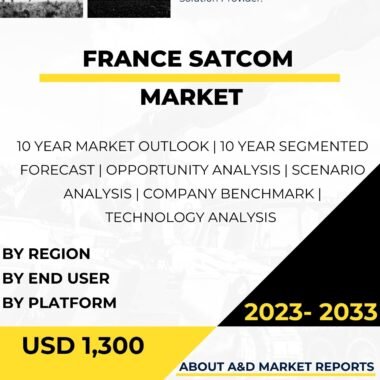Description
The SATCOM (Satellite Communication) market in Malaysia has experienced significant growth and development in recent years, reflecting the country’s commitment to enhancing its communication infrastructure, connectivity, and national security. Satellite communication plays a crucial role in various sectors, including defense, telecommunications, broadcasting, and emergency response. The adoption of advanced SATCOM technologies enables Malaysia to establish a robust and modern communication network, contributing to the country’s overall economic growth and security.
As a nation with strategic geopolitical importance in Southeast Asia, Malaysia faces diverse communication challenges, including the need for reliable and widespread connectivity across its vast and diverse geographical terrain. Satellite communication provides a viable solution to overcome communication gaps, especially in remote and rural areas where terrestrial infrastructure may be limited or economically unfeasible.
The SATCOM market in Malaysia has witnessed significant technological advancements. Modern SATCOM systems utilize high-throughput satellites and advanced modulation techniques to provide higher data rates, improved efficiency, and enhanced network capacity. These advancements have expanded the availability of broadband internet services, improved telecommunication services, and facilitated the deployment of critical communication links for government agencies.
Moreover, SATCOM technologies are crucial for enhancing national security and defense capabilities. The Malaysian Armed Forces utilize SATCOM systems for secure and reliable communication between command centers, bases, and deployed forces. Satellite communication ensures continuous and resilient connectivity, enabling real-time exchange of critical information and decision-making in military operations.
Additionally, SATCOM is instrumental in disaster response and emergency communications. During natural disasters or emergencies, terrestrial communication infrastructure may be severely impacted or disrupted. SATCOM systems provide reliable and rapid communication links for emergency response teams, enabling coordination, and information dissemination in crisis situations.
The Malaysian government has recognized the importance of international collaborations in acquiring and developing SATCOM technologies. Partnerships with leading global satellite operators and telecommunications companies have facilitated access to cutting-edge SATCOM systems and expertise. These collaborations have enabled technology transfer and capacity building, contributing to the growth of Malaysia’s domestic SATCOM capabilities.
Furthermore, Malaysia has been actively investing in local research and development (R&D) initiatives to foster indigenous SATCOM technologies. By encouraging homegrown innovation, Malaysia aims to achieve self-reliance in SATCOM development and strengthen its satellite communication industry.
While the SATCOM market in Malaysia shows promise, it is not without challenges. One of the primary hurdles is the high cost of developing and acquiring advanced SATCOM systems. These sophisticated technologies require significant investment in research, development, and satellite launches. Budget constraints may impact the pace and scale of SATCOM deployment and modernization efforts.
Moreover, SATCOM systems require skilled operators and specialized training to utilize them effectively. The Malaysian Armed Forces and other agencies must invest in continuous training and education to ensure their personnel possess the necessary expertise to operate and maintain these complex systems.
Additionally, the allocation of satellite spectrum and orbital slots is a critical consideration for SATCOM deployment. Coordinating satellite frequencies and orbital positions to avoid interference with neighboring countries and other satellite operators is essential to ensure smooth and efficient satellite communication services.
Looking ahead, the SATCOM market in Malaysia is poised for further growth. The government’s commitment to enhancing its communication infrastructure and investing in advanced SATCOM technologies will drive continued investments in satellite communication systems. As SATCOM technologies continue to evolve and demonstrate their effectiveness, they are likely to play an increasingly pivotal role in Malaysia’s economic development, national security, and emergency response capabilities.
Moreover, Malaysia’s participation in regional and global SATCOM collaborations will likely influence its SATCOM requirements. As the country seeks to strengthen its position as a key player in regional telecommunications and space cooperation, the demand for advanced SATCOM systems with interoperability and compatibility with allied forces will increase.
In conclusion, the SATCOM market in Malaysia has experienced significant growth and progress. The government’s focus on enhancing its communication infrastructure, national security, and investing in advanced SATCOM technologies has paved the way for the integration of modern satellite communication systems into its national development and security strategies. International collaborations and domestic research efforts have positioned Malaysia as a participant in the global SATCOM landscape.
However, challenges related to budget constraints, technology development, training, spectrum allocation, and engineering expertise must be addressed proactively to sustain and enhance the growth of the SATCOM market in the years to come. By maintaining a modern and capable SATCOM infrastructure, Malaysia can effectively enhance its communication capabilities, bridge digital divides, and strengthen its overall economic and national security.




